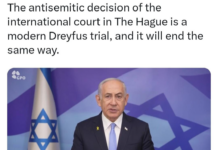Ali Harfouch analyses whether Syria’s rebel factions are able to unite against Bashar al-Assad or continue infighting, which could possibly hinder the effort to overthrow him.
As the world’s powers and some Syrian rebel groups gather for the Geneva 2 talks, the Syrian revolution over the recent months has became all the more difficult to understand as differences between the array of rebel groups have grown.
Discerning “who is who” was made increasingly complicated when a rift grew between the leaderships of the Jihadist factions in Syria. Jabhat an-Nusra and the Islamic State of Iraq and the Levant (ISIL) have received global attention and have eclipsed many of the other rebel factions who have long battled with the al-Assad regime.
What is the relationship between these Jihadist factions with the indigenous factions? Why is there a rift between them? To understand these issues and other related matters, a handful of key developments need to be understood.
Jabhat an-Nusra and ISIL/ISIS
Subscribe to our newsletter and stay updated on the latest news and updates from around the Muslim world!
Around six months ago, Abu Bakr al-Baghdadi, the leader of the “Islamic State of Iraq” released an audio statement in which he announced that Jabhat an-Nusra was to be dissolved back into the group from which it had (according to Baghdadi) originated – the Islamic State of Iraq. His organisation became known as the Islamic State of Iraq and Sham (the Levant), or ISIS.
The announcement sent shockwaves across the the world, but more so, amongst the leadership and rank-and-file within Jabhat an-Nusra. Within days, Abu Muhammad al-Joulani, the head of Jabhat an-Nusra rejected the proposal and “reaffirmed” his allegiance to Dr Ayman Al-Zawahiri who, for Joulani, represented the global Emir of Jihad whereas Baghdadi represented the cause in Iraq. As a result, a number of soldiers belonging to Jabhat an-Nusra renounced their affiliation with the organisation and joined the nascent and rapidly growing Islamic State of Iraq and Sham (ISIS).
Dr Ayman al Zawahiri and Abu Bakr al-Baghdadi
In response to this divisive act, and in an attempt to quell the unrest and confusion amongst the mujahideen within both organisations, Al-Zawahiri sent letters to both Baghdadi and Joulani. In both letters, Zawahiri called upon Jabhat an-Nusra to remain autonomous and that the so-called “Islamic State of Iraq” should remain in Iraq. He repudiated Baghdadi for not having “consulted us”. Baghdadi, all the more defiant, responded with an outright rejection of Zawahiri’s compromise and stated that the “State would remain, and we will not bargain with it or back down from it until Allah the Almighty raises it above or we die without it”.

For Baghdadi, Zawahiri’s decision was not merely a strategic miscalculation, it was far graver; “As for the message that was attributed to Sheikh Ayman Al-Zawahiri, may Allah preserve him, we have … several shariah and method-based issues (with it), and the worshipper was given the choice between the command of His Lord and the command that opposes Allah’s command.”
The implications of this insubordination were drastic; having defied Zawahiri, al-Baghdadi had essentially declared himself autonomous of al-Qaeda as a global organisation and of the global Jihadi movement – both of which were symbolically and organisationally represented by Zawahiri.
As a result, two poles of leadership now exist in the Arab world; that of Zawahiri and that of Abu Bakr al-Baghdadi, the latter of whom asserted himself as “Amir al-Mu’mineen” (the Leader of the Believers). Most political figures and movements have generally sided with one of the two camps.
Position of scholars
The three most prominent Salafi Jihadi scholars; Abu Muhammad Asim al-Maqdisi (Isam Muhammad Tahir al-Barqawi), Abu Qatada al-Filistini (Omar Mahmoud Othman) and Abu Basir at-Tartusi (Abd-al Mun’em Mustafa Halima) have repudiated the ISIS for their arbitrariness and exclusivity. Other prominent figures like Dr Iyad al-Qunaybi also critiqued the ISIS and urged the organisation to engage in a set of reforms which included changing the organisation’s name.
More so, in a recent development most Jihadi factions in Syria including Ahrar ash-Sham, Suqur ash-Sham, Jaysh al-Islam and others formed a united front called al-Jubhat al-Islamiyyah (the Islamic Front). Soon after, a leaked letter written by Abu Muhammad Asim al-Maqdisi called for Islamic movements including the Muslim Brotherhood, Hizb ut-Tahrir and the Salafi Jihadi movement to unite in the face of the Egyptian government’s aggression against Morsi and his supporters. In contrast to calls for unity, the Islamic State of Iraq and Sham (ISIL) adopt a more exclusivist discourse.
Rift
The rift between Jabhat an-Nusra and its supporters on one hand, and the ISIS on the other is due to three fundamental reasons:
Ambiguous Vision

The Jihadi movement and its various factions are divided in their vision, with some of its key ideologues calling for an insurrection against the “close enemies” – the authoritarian regimes, while others calling for a global Jihad against the United States i.e. the “far enemy”. Accordingly, different strategies are employed by different movements all of which operate without an overarching framework held together by a coherent vision. Abu Musab az-Zarqawi’s “Four-Step” strategy, presented to al-Qaeda’s leadership 2004, is a prime example of conflicting strategies between al-Qaeda and its “local branches”.
Unity
The local branches of al-Qaeda across the Arab world were either direct products of al-Qaeda’s leadership, usually operatives sent by the leadership to lands of conflict and tasked with setting up the organization in a particular region, or local Jihadi movements which originated independently of al-Qaeda’s leadership but later joined the organisation by swearing allegiance to the late Osama bin Laden or Zawahari.
In both cases, al-Qaeda’s leadership faced a paradox; for the local leaders to succeed within their volatile environments, they needed a great deal of autonomy – it was precisely this greater autonomy, however, that led to an impasse between al-Qaeda’s leadership and its local commanders. Paradoxically, one major reason that al Qaeda affiliates are not getting along is the great many opportunities before them. The turmoil in the Arab world has created security vacuums that Zawahiri has sought to exploit by calling on his local affiliates to set up shop. As they move in, they often disagree about who should be in charge.
Infiltration
Regional security services like those in Jordan, Saudi Arabia, and Syria have been known for heavily infiltrating Jihadi factions. Most recently, officials in Algeria, for example have admitted that it was indeed involved in several of the massacres attributed to the Jihadi factions in Algeria.
A similar strategy has been employed by the Syrian regime towards al-Qaeda, in both its pre-Syrian revolution and post-revolution phase. According to Abu al-Baraa of the Revolutionary Military Council in Aleppo, “the Syrian regime is using an intelligence strategy against the rebels. One of its primary methods is to recruit elements to infiltrate areas under our control”.
Assassinations of FSA members, rebel “infighting” and other similar acts have been attributed to these infiltrations. Perhaps the November airstrike against the high-level rebel commander Abdul Qadir Salih, whilst in a confidential meeting with other key and high-level rebel commanders indicates how far up these infiltrations have reached.
Infighting
The past two weeks have witnessed the most intense, wide-scale clashes between the ISIS and other revolutionary fronts. Clashes have erupted across Aleppo and Idlib following an attempt by the ISIS the city of al-Atarib, an attempt which came after the body of an Ahrar ash-Sham leader was found severely disfigured leading to subsequent protests against the ISIS.

Soon after, a newly formed front called Jaysh al-Mujahideen published a statement demanding the dissolution of the ISIS and gave foreign fighters one of two options – leaving Syria within 24 hours or joining one of the existing factions within the Syrian Revolutionary Front. Significantly, the powerful Islamic Front, which makes up the bulk of fighters in Syria also published a statement albeit with less profound demands; the immediate withdrawal of the ISIS from the city of al-Atarib.
Unmet demands were followed by raids, led by Jaysh al-Mujahideen and factions from the Islamic Front against various ISIS locations, leading to the expulsion of the ISIS from key locations as well as the the death or arrest of dozens of ISIS fighters.
Abu Muhammad al-Joulani soon stepped in, releasing a statement in which he proposed a series of actions aiming at mediating between the rivaling factions. Al-Joulani began by noting that “Many aggressions have taken place in the field by factions against each other and the incorrect policies that the Islamic State (ISIS) follows in the field has greatly contributed to the exasperation of the conflict.” citing the arrest of JN’s amir in Raqqa after the ISIS accused him of apostasy as an example of such transgressions.
For close observers of politics in the Muslim world, the JN-ISIS split is no anomaly but rather part of a larger pattern which the Arab Spring has brought to the surface. In fact, similar scenarios emerged in North Africa with Mokhtar Belmokhtar who defied Zawahiri’s orders and al-Qaeda’s “Libya Strategy” by creating his own domestic brigades. A counter-letter sent from the al-Qaeda leadership in North Africa to Belmokhtar’s brigade admitted; “And now, to the heart of the topic. Calling on God’s help, we say: Know, friends, that your letter clearly expressed your main wish, that is the desire for independence, separation and cutting of ties with the leadership of al-Qaeda in the Islamic Maghreb”.
Unsurprisingly, the content of the article is starkly similar to those sent to Zarqawi and al-Baghdadi: after all, they were dealing with the same problem. The main question on the minds of most now is whose voice will be the loudest amongst the Jihadi leadership in the “post-Arab Spring”? More importantly, who speaks in the name of the movement?




















